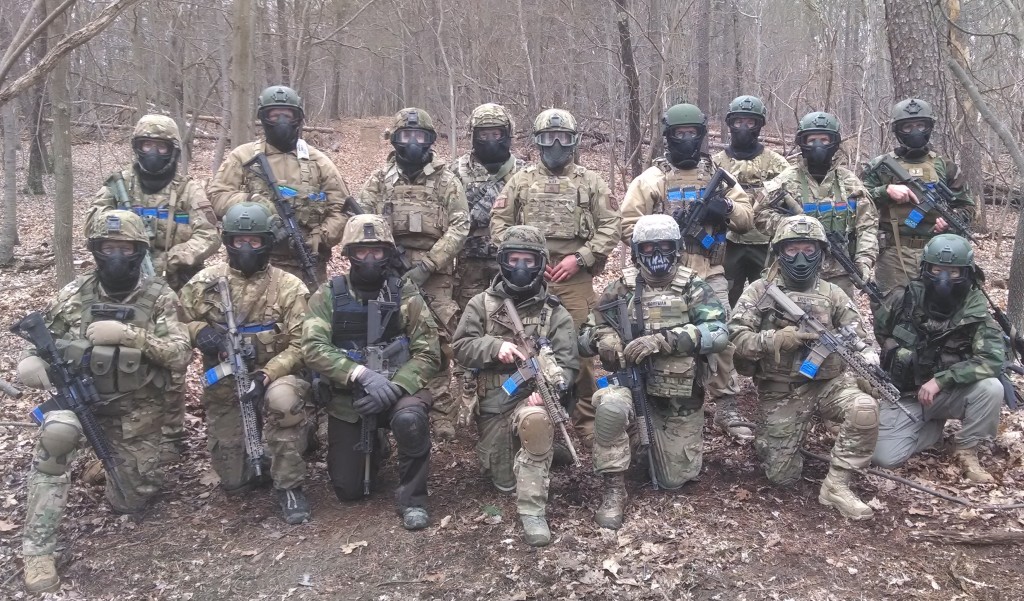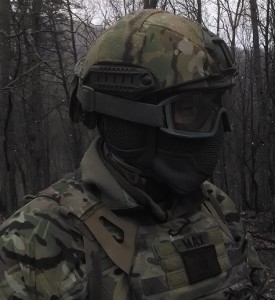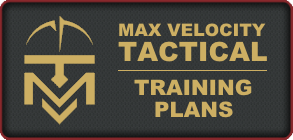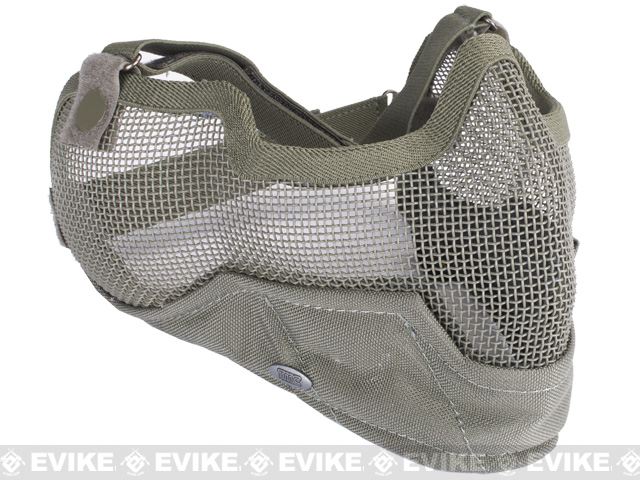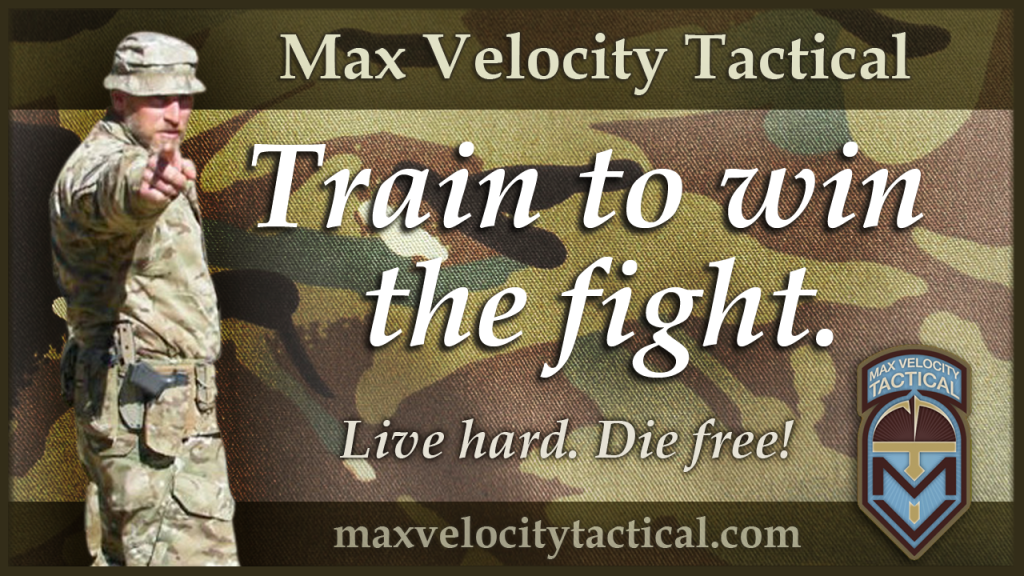Student Review: Force on Force Team Tactics March 2016: MikeQ
Force on Force 3-19-16 Student Review:
Yet another great weekend at Max’s VTC in the hills of West-by-God-Virginia! I cannot overstate how much fun I had in this class. This experience was a huge eye opener for me. I thought I was comfortable with the skills and knowledge I have gained over the past 18 months. However, it is a drastic change when the enemy is actually shooting back at you.
I won’t spend much time going through the schedule of events, but rather spend this AAR on lessons I learned and were shared by others after the class itself.
Communication
Everything you hear about small unit combat all boils down to three things. Shoot. Move. Communicate. Throughout the weekend there were instances of good communication but more often than not bad communication.
Hand signals need to be agreed upon and practiced before each and every drill and scenario. Several times unclear hand signals came into play on our team, which required the team leader to move to the point man to understand what he saw. Had we been clearer on our hand signals this step could have been avoided.
Verbal communication is also a huge requirement – but not until you are in contact. Yelling at your team while on patrol is not a good idea in any scenario. With the equipment we were wearing it was very hard to hear what was being yelled at each other. The UTM rounds are very quiet but the masks deaden all the sound around you except your breathing. (which by the way makes you sound like Darth Vader when you breathe) However in actual combat the rounds are so loud you’ll have a hard time hearing shouted communication anyway so it’s close to a balance.
Communication really starts to break down once you are in contact. Especially when one or more of your teammates goes down. You have no idea if they are “dead” or not. If your team leader goes down, then the next in line needs to take up the slack of leadership. If no one does this, then you have a group of individuals doing their own thing, and that very rarely ends well.
Gear/Equipment
Have all of your gear sorted out before you start this class. I was running a whole new chest rig and lite battle belt. However, I spent the two weeks before class running the gear through drills in my basement figuring out the placement of all my stuff. Half of my gear needed to be adjusted one way or another. So when I took the class everything worked well for me. I did learn that having a cap for your drinking tube mouth piece is a good thing to have. Crawling through the goo and then trying to take a drink sucks. Other than that everything else worked fine.
As others have stated I would highly recommend the ballistic goggles and mesh face shield for the next class. I will be ordering mine in the next two weeks.
See the Force on Force Team Tactics Page HERE for details on the face masks
If you are wearing plates, then chest and back shots allow you to stay in the fight. I was “killed” once over the weekend with a chest shot. Had I been wearing my plates I would have “survived”, at least for a little longer… I had just bought the plates that weekend and was already running new gear and didn’t want to add that confusion into the mix until I had a chance to train with them. However, for anyone waffling about whether or not to buy plates this class is a perfect example of why you should own them!
During the scenario training I “died” twice. Once with a head shot and again with the chest shot. We only had 4 scenarios on Sunday. You do the math… 25% survival rate is a hell of a lot better than 50%.
Skills
Smooth mag changes equate to fast mag changes. As Max and cadre always teach, when performing a mag change improve your position of cover. If standing, then kneel. If kneeling, then go prone. If already prone, then be quick! The same applies to stoppages on your weapon. Work the problem as quickly as possible and as low as possible. One teammate of mine was killed while performing this task. According to the “enemy” after the fight, “he was out there all in the open and I just had to take the shot.” It was a great learning tool. After that action I tried to make sure I did the same thing.
Shooting. The point of impact for these rounds is drastically different beyond 35 yards then your live rounds. Understand your point of aim first thing on the weekend. Once everyone got over the different ballistics, the shooting got much better. All in all, most everyone I’ve come across at MVT can shoot just fine.
Observation is a key skill. The human eye is attracted to movement. When I played defense I caught movement way before I caught outlines, color schemes, etc. When moving great care should be given to what kind of formation you are using. Overwatch, staggered, in-line, etc. What kind of separation between team members and other teams? The answer is it depends… Getting out to train in your local AO will help determine what works and what doesn’t. Also the time of year can change how you move as well.
Target Identification is very important. One scenario had a team get into a firefight with two of its own elements! Several team members were “killed”. If you already have a team, or retreat group or whatever, having some way of identifying each other is critical! Imagine your brother, or father, or son is on your team, shtf, and you get into a fight and misidentify and kill one of them. How the hell do you go back home and explain you killed them because you couldn’t identify them? How the hell do you look your wife in the eye and say I’m sorry for something like that?! Use colored armbands, headbands, vibrantly colored patches, etc. Whatever you decide get it on all teammates and then get into a mock fight and see if you can distinguish the mark in your AO throughout the different seasons.
These fights get confusing as hell. Each team is flanking, counter flanking, everyone is yelling. Guys are getting hit, screaming for help. You can’t understand it until you’ve been through this type of training. Being a lone hero very rarely works. Usually you get killed quickly. Always, always, always work as a team.
Fitness
Being physically fit is very important as well. I know Max harps on everyone needing to be as fit as possible but when you’re out on the hills of West-by-God-Virginia you really need it. Having the stamina, wind, and leg strength is everything! Basic upper body strength is all you really need. Being able to bench press 400 lbs doesn’t do any damn good. Being able to dash 5 yards, drop to the ground, shoot, push up and repeat every 20 seconds, for 7-10 minutes straight is important. Granted moving that often isn’t probably reality but that’s what you really need to be able to do in this type of training. You also need to be able to walk down or up the side of a 400-foot hillside without dying of a heart attack.
We had one individual who had an injured knee and therefore couldn’t partake on the offensive side of the equation. He stayed and played defense, yet he was still in contact in all but one scenario. So the lesson there is to leave the injured people on defense, but in a smart defensive position… Having your defense sitting right on top of the objective isn’t really smart. Perhaps ahead or even behind the objective make more sense…
It makes sense to let everyone run through both the defensive side and the offensive side of each scenario. However, if at all possible let your gazelles go running. It just doesn’t make sense to let one slow guy mess up an entire team because he’s slow.
I plan to run with my plate carrier every time I run so I can get used to the weight. Yeah I may look funny but I don’t give a damn about my looks.
Misc.
Playing the enemy every chance you get on day one is a great tool. Yeah you go through more ammo but seeing how people, walk (crash) through the woods, and react to a contact are very interesting and educational. As the enemy you should let the “good guys” know what tipped them off. What they did which exposed themselves more than they should have. See my example above with the weapon stoppage…
Also trying to assault uphill with defenders knowing where you are, is a bad idea. Unless you have overwhelming manpower – you’ll just get chewed up. Surprise is a great tool, but if your plan relies solely on surprise and you lose that element then it’s better to fall back and find better ground to fight on.
Location, location, location. Picking your choice of ambush location is best done when you have the time to make sure you’re not exposed to the enemy. It is best to send someone out to check and see if your team can be seen from the enemy’s perspective. We didn’t really have that much time to perform that task but in real life would be best to do so.
If you are setting an ambush and are unsure of the enemy’s actual line of advance then a slightly bent formation will best to cover a wider area. That way half of your team could engage and then the other half can move up into position. Otherwise you risk half or more of your team being exposed to the enemy’s advance which would require them to shift – which their movement could give away to the enemy.
Leadership
Take a turn at being a team leader and the squad leader. I was team leader for a few rounds and I enjoyed it. Also make sure you give others a chance to be the leader as well. Some don’t want to do it but try and force them. Most likely you and more importantly they will be surprised at how well they do. Don’t go into this class expecting you are the best or that others suck because of a pre-conception. The opposing team used a 25 year who’s only ever been to one CTT class before this. He did an excellent job and was praised throughout every iteration by Max and First Sergeant.
If you are not the team leader and he/she is still in the fight, then damn well do what they tell you to do! I was a casualty in the last fight and listened while the opposing team leader kept having to hound his team into giving him the observation information he needed in order to make decisions. His teammates were not giving him the information throughout that entire fight and he therefore was not as effective as he could have been. Ultimately his team was picked off one by one, by one “injured” man. If they had communicated better the team leader could have flanked his team around the one defender and killed him. But lack of communication lead directly to that team’s entire death.
It’s easier to lead the team being in the center of the team. That way the leader can be in the center of the action as well as more easily communicate with both the point man and rear man. If the leader is at one end of the line or another it’s much harder to control the flow of the team.
So there are my big take-aways from this class. I highly recommend taking this class. It’s just so much fun!
Max adds: students paid for 500 UTM Man Marker Rounds. That is a large bulk of the class cost ($400 against $350 for the class fee), balanced against not having to bring your own live ammo. The 500 rounds was just about right. At the end of the class, students chose to either mark up their spare ammo in a baggy for use next time around, or to simply donate it to a communal bag. So for future classes, we will probably hand out spare ‘enemy mags’ using this surplus ammo, to reduce expenditure for students when playing enemy. Also, I will aim to have a small surplus of boxed ammo available for purchase in case students run through the 500 rounds. The reason I ask for the class to be paid up in full 60 days out, is because the UTM ammo purchase for the class is a significant cash outlay.

